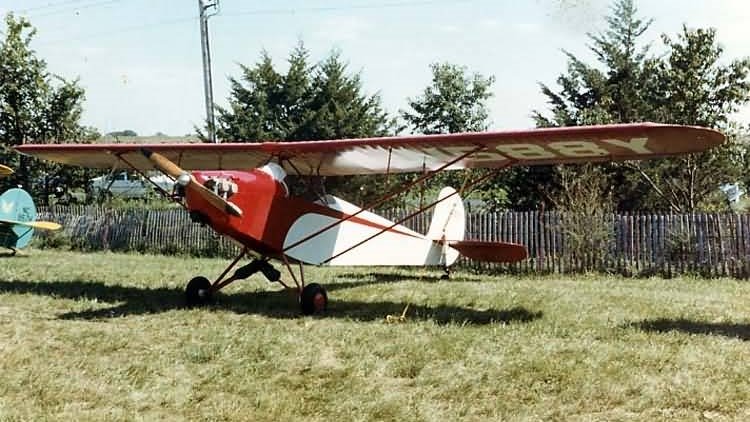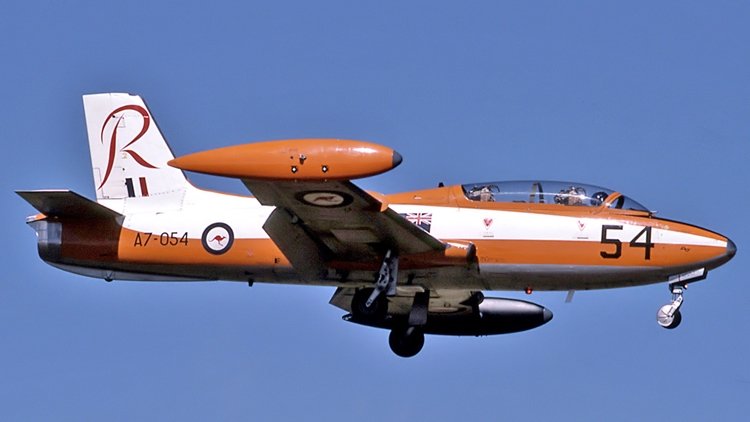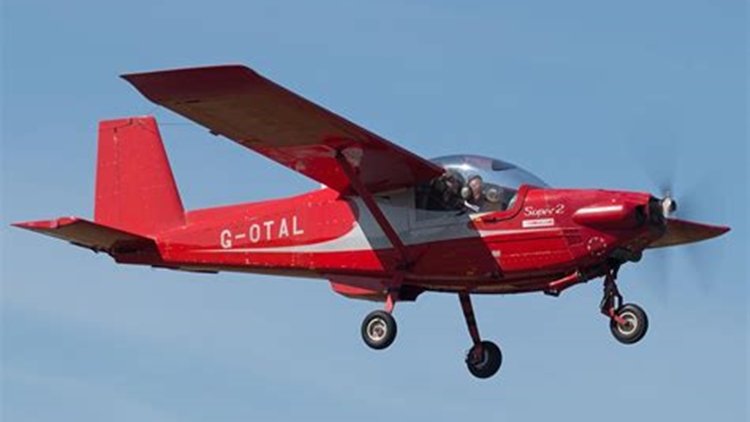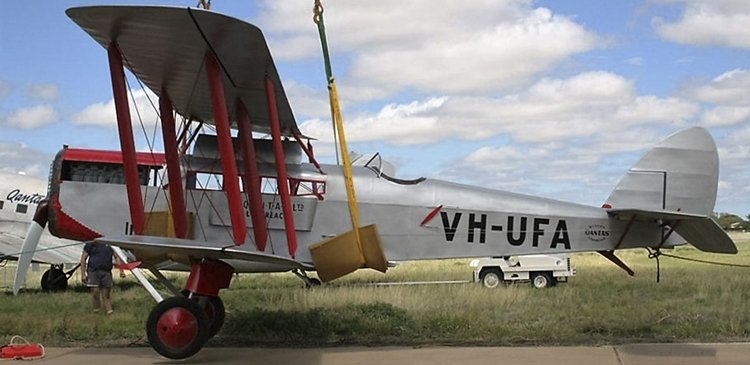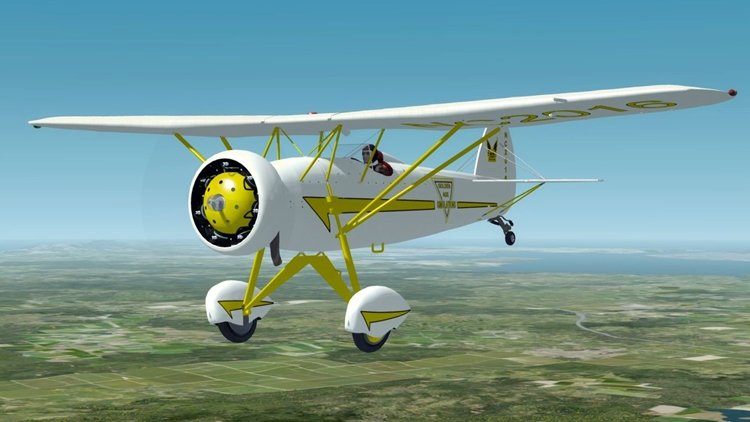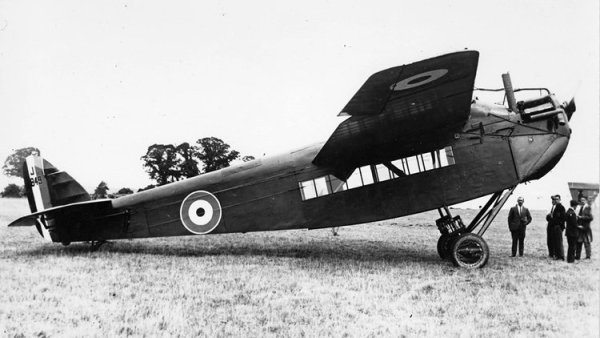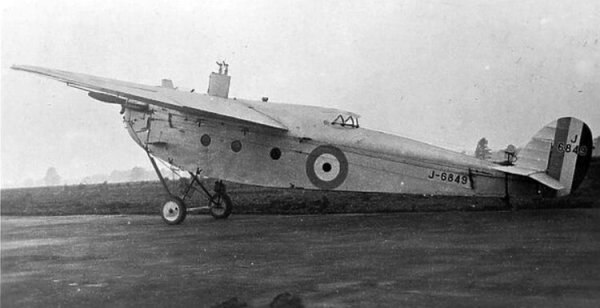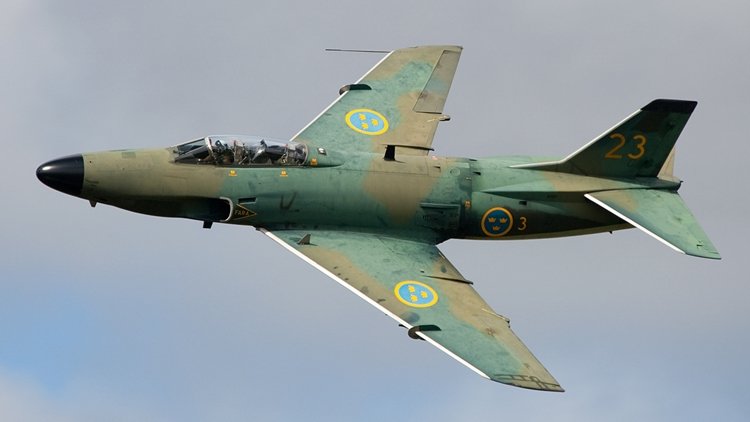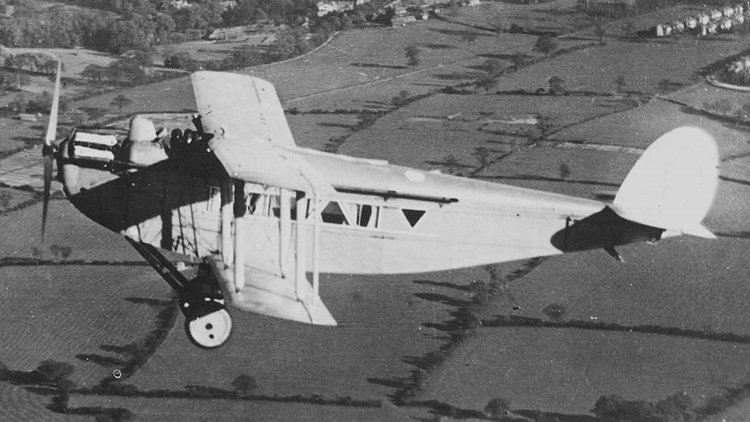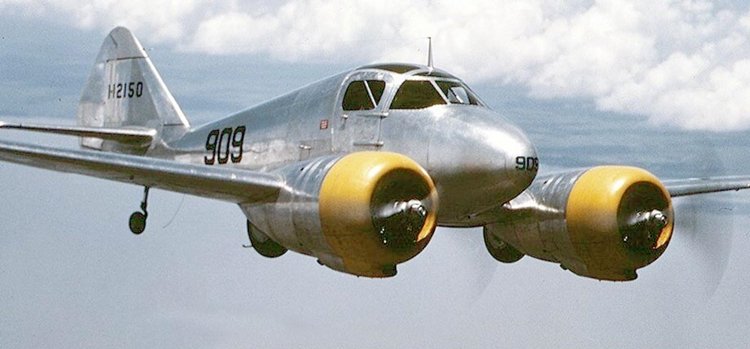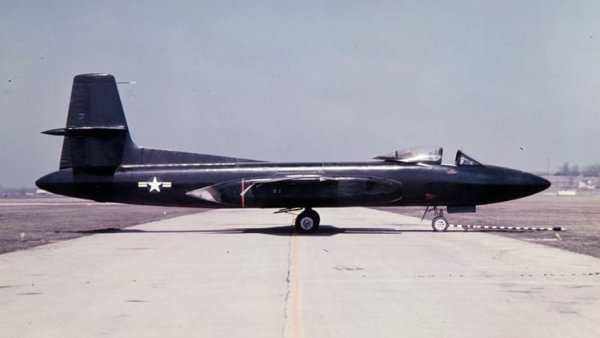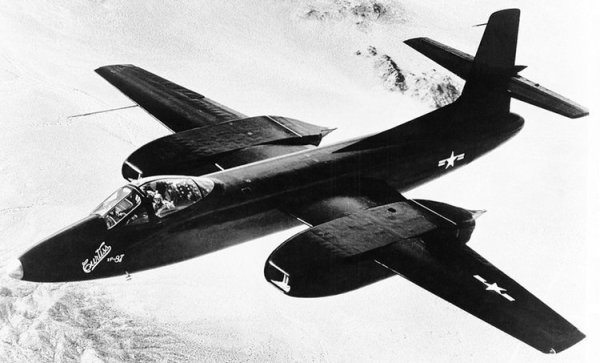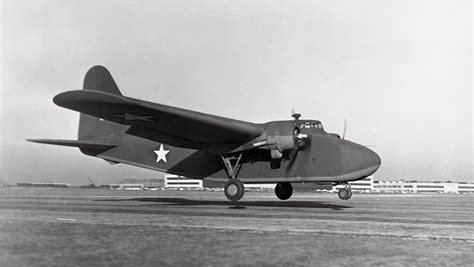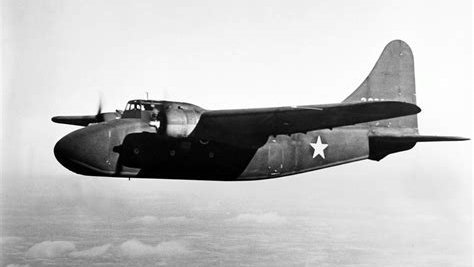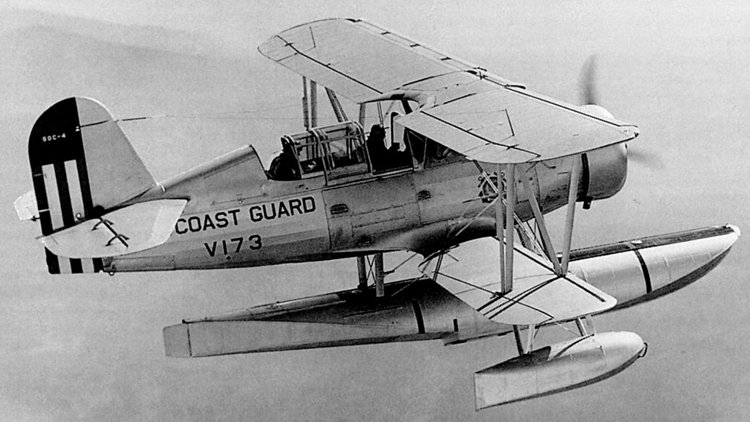-
Posts
7,693 -
Joined
-
Last visited
-
Days Won
67
Content Type
Profiles
Forums
Gallery
Downloads
Blogs
Events
Store
Aircraft
Resources
Tutorials
Articles
Classifieds
Movies
Books
Community Map
Quizzes
Videos Directory
Everything posted by red750
-
The Eaglet 31 was a United States two-seat tandem ultra-light high-winged monoplane of the early 1930s. Intended as a low-cost aircraft, its limited production run relegated it to a footnote in aviation history. The American Eagle Aircraft Corporation found that demand for their A-129 biplane and their other models was badly affected by the Wall Street stockmarket crash of late 1929 which ushered in the Great Depression. The small ultra-light, tandem two-seat Eaglet was therefore designed by company president, Edward E. Porterfield, to appeal to pilots with more modest pockets. Porterfield set a realistic goal of manufacturing an aircraft for $1,000. The first advertised price was $995.00. The first model was the 1930 Eaglet 230, initially powered by the 25 h.p. Cleone engine that flew on June 30, 1930. The engine was so underpowered that only solo flights were possible. Most later Eaglet 230s featured a 30 h.p. "Zeke" Szekely three-cylinder radial engine. Further experimentation led to fitting a Franklin engine and 60 h.p. Velie. A 40 h.p. Salmson engine was tried but proved to be too expensive to incorporate into the proposed production line. The Szekely eventually ran reliably as an overhead valve 45 h.p. version. The single Model A-31 of 1931 was fitted with the more powerful Continental A-50 of 50 h.p., and was followed by 13 Model B-31 and B-32 powered by the 45 h.p. Szekely SR-3. The bulk of these examples were produced after the American Eagle company declared bankruptcy and was absorbed by Lincoln Aircraft in May 1931 and reformed as the American Eagle Lincoln Page Aircraft Corporation. The venture was short-lived with the factory closing in 1931. Production rights to the Eaglet later went to American Eaglecraft who produced three examples from 1940–1947 and rebuilt further aircraft of this design. Variants Eaglet 230 (Specifications below) 30 h.p. Szekely SR-3; Eaglet 231 40 h.p. Salmson AD-9 (2 modified from model 230); Eaglet A-31 50 h.p. Continental A-50; Eaglet B-31 & B-32 45 h.p. Szekely SR-3; (B-32 had minor control modifications)
-
-
The Aermacchi MB-339 is a military jet trainer and light attack aircraft designed and manufactured by Italian aviation company Aermacchi. The MB-339 was developed during the 1970s in response to an Italian Air Force requirement that sought a replacement for the service's existing fleet of Aermacchi MB-326s. Its design was derived from that of the MB-326, rather than a new design, and thus the two aircraft share considerable similarities in terms of their design. Aermacchi had found that the MB-339 was capable of satisfying all of the specified requirements while being the most affordable option available. The maiden flight of the MB-339 took place on 12 August 1976; the first production aircraft were delivered two years later. Roughly half of all MB-339s entered service with the Italian Air Force, while the remainder have been sold to various export customers. As well as being used for training, the type is also flown by the Frecce Tricolori aerobatic display team. The type has been used in combat by both the Eritrean Air Force during the Eritrean–Ethiopian War of 1998–2000 and the Argentine Naval Aviation during the Falklands War of 1982. In both conflicts, the MB-339 was typically flown as an attack aircraft. In Italian service, the aircraft is intended to be replaced by the newer Aermacchi M-345. The Aermacchi MB-339 is a military jet trainer and light attack aircraft, featuring a conventional configuration, tricycle undercarriage and all-metal construction. It has many similarities with the design of the MB-326, sharing the majority of its airframe with the older aircraft. According to aviation periodical Air International, the most significant revision of the MB-339 was a redesigned forward fuselage, which raised the instructor's seat to allow visibility over and past the student pilot's head. In typical operations, the aircraft is flown by a crew of two, who are seated in a tandem configuration; during training missions, the student is seated in the forward position while the observing instructor is placed directly behind and somewhat above them. The cockpit is pressurised and is covered by a jettisonable canopy which works in conjunction with the twin Martin-Baker-built ejection seats. The MB-339 possesses a low, un-swept wing complete with tip tanks; the air intakes for the single turbojet engine is located within the wing roots. This wing is identical to that used on the older MB-326K model. The powerplant used for the aircraft's initial versions was the Rolls-Royce Viper 632-43 turbojet engine, which was capable of producing a maximum thrust of 4,000 lbf (17.8 kN); this is the same model as installed upon the older MB-326K model. Later models, such as the MB-339C, are furnished with the more powerful Viper 680 engine, which can generate up to 4,300 lbf (19.57 kN) of thrust. For improved aerodynamics, the MB-339 features an enlarged tailfin over its predecessor. While some models of the MB-339 are primarily intended for training operations, other are instead principally equipped to perform light fighter and fighter-bomber roles. Combat-orientated aircraft are typically outfitted with more advanced avionics, such as improved inertial guidance systems, digital nav/attack computers, a MIL-STD-1553B databus, and hands-on throttle-and-stick (HOTAS)-compatible flight controls. Furthermore, various defensive systems, such as a radio jammer, radar warning receiver (RWR), electronic countermeasures (ECM), along with larger wingtip tanks, would typically be adopted. The MB-339K carries a pair of 30mm DEFA cannon while a total of six underwing hard points can accommodate up to 1,815 kilograms (4,000 lb) of external stores.[2] It has been qualified to be armed with various munitions, such as the Sidewinder and R.550 Magic air-to-air missiles, the AGM-65 Maverick air-to-surface missile, various laser-guided bombs and rockets, as well as the Marte Mk.2 anti-ship missile. According to Forecast International, Aermacchi had at one point considered making provisions for the installation of an additional two pod-mounted 30mm cannon. For deails of operational histoy and numerous variants, click here.
-
The Aermacchi AM.3 was the result of a joint venture between Aermacchi and Aeritalia (then Aerfer Industrie Aerospaziali Meridionali) in response to an Italian Army requirement for an aircraft to replace the Cessna L-19, and was initially designated the MB-335. The AM.3 used the wing design of the Aermacchi AL-60 utility aircraft, strengthened to incorporate two hardpoints. The fuselage was a new design. The first prototype, constructed by Aermacchi, flew on 12 May 1967, and it was displayed at the Paris air show in June that year. The second prototype, constructed by AERFER, flew on 22 August 1968, but the aircraft lost the Italian Army contract to the SIAI Marchetti SM.1019. Nevertheless, Aeritalia continued development. The third prototype used a more powerful Piaggio-built Lycoming GSO-480-B1B6 in place of the original Continental GTSIO-520-C, and this variant was designated AM.3C Pilot and observer are accommodated in tandem positions, and the craft features dual controls. Aft space is utilitarian, providing space for two stretchers or seat space for additional passengers. Additional configurations include freight transport. Armament configurations are diverse, as well. Two standard underwing pylons were able to carry 170 kg (375 lb) of stores each. Typical armament includes machine guns, rockets, bombs and missiles. Reconnaissance packs could be fitted to, or inside of, the fuselage. Additional pylons were often added by customers. In September 1970, the South African Air Force ordered 40 AM.3Cs, designating the aircraft the AM.3CM Bosbok (Bush-buck). The first aircraft was taken on charge in March 1973, with deliveries continuing until December 1975, equipping 41 Squadron and 42 Squadron. The Bosbok saw extensive action during the South African military operations in Angola between 1975 and 1989, during which it wore an olive-drab/dark earth camouflage instead of the light-grey paint scheme in which it was delivered. The SAAF's Bosboks had four underwing hardpoints from which a variety of ordnance could be hung, including machine-gun pods, light bombs, and smoke-rocket pods. Each of the two inner hardpoints was stressed for a 170 kg (375 lb) load, with the two outer points being stressed for a 91 kg (200 lb) load. Roles performed by the Bosbok in SAAF service include: Forward air control Radio relay (referred to as "Telstar duty" by the SAAF) Target marking (using smoke-rockets) Reconnaissance/observation (including artillery spotting) Casevac Liaison The Bosbok really excelled in the dangerous role of target-marking, in which it used this technique - the aircraft would approach the target at tree-top height, pull up to around 92 m (300 ft) when nearly overhead the target, line up the nose on the target, and release the rockets, before quickly turning away and diving back to tree-top level to avoid ground fire. Using this method, a Bosbok was once credited with destroying an entire 37 mm anti-aircraft gun position with a lucky direct hit from one of its smoke marker rockets. Following the end of South Africa's involvement in the Angolan War in 1989 and the subsequent downsizing of the SAAF, the Bosbok was retired from service in 1992.
-
The Aermacchi or Macchi MB-326 is a light military jet trainer designed and produced by the Italian aircraft manufacter Aermacchi. It is one of the most commercially successful aircraft of its type, being bought by more than 10 countries and produced under licence in Australia, Brazil and South Africa. The MB-326 was developed during a period in which "all-through" jet training was considered by many air forces to be the most cost-effective model for training of military pilots. Accordingly, Aermacchi designed it as a single type of aircraft that could readily be perform both elementary and advanced training right through to a near combat-ready standard. Proposed during the 1950s, the Italian Air Force (AMI) quickly became interested in the MB-326, and an initial contract to produce three prototypes was issued following a competition. Several design refinements were made prior to the AMI giving its official approval of the project during 1956. On 10 December 1957, the first prototype performed its maiden flight. On 15 December 1958, the Italian government issued Aermacchi was an order for 15 pre-series aircraft; further orders soon followed. During February 1962, the MB-326 formally entered service with the AMI. Operational experience with the type demonstrated that the simplicity and economy of scale of operating just one type for all training purposes was usually outweighed by the purchase and operating costs of a large all-jet training fleet. Many operators soon switched to operating the MB-326 in conjunction with a cheaper piston-engined type for basic training purposes. Over time, the MB-326 found its primary role as a lead-in trainer to prepare pilots for transition to very high performance fighter aircraft. It set many category records, including an altitude record of 56,807 ft (17,315 m) on 18 March 1966. While the majority of operators were military, some civil organisations also flew the type; Italy's national flag carrier Alitalia conducted pilot training using a handful of MB-326s. The Aermacchi MB-326 was a low-wing monoplane with an all-metal structure composed of light alloys. It was one of the first jet trainers to be developed with the aim of catering to both for ab initio and advanced instruction. As originally developed, the MB-326 functioned as a refined but simple aircraft capable of covering the considerably wide range of performance characteristics required to cover both ab initio training and advanced instruction alike; other major characteristics of the type included the capacity to deliver a high rate of utilization in conjunction with minimised servicing and maintenance requirements. According to Flight International, the type was suitable for the teaching of the majority of advanced flying techniques. In addition to being relatively easy to fly, a high degree of safety was also intentionally built into it, including adoption of new Martin-Baker-built ejection seats. The MB-326 was powered by a single Rolls-Royce Viper non-afterburning turbojet engine, initial production aircraft were powered by the Viper 11 model, capable of generating up to 2,500 lb of thrust. The engine possessed multiple favourable attributes, including its general simplicity and robustness, relatively low revolutions per minute (RPM) and turbine entry temperature (TET), rapid acceleration, ease of installation, and its somewhat forgiving nature to mishandling in the air by students. Air was provided to the engine via a pair of low-profile intakes set into the wing roots. The Viper was produced under licence by Italian aviation company Piaggio following an agreement established with its original manufacturer, the British engine firm Bristol Siddeley, during 1959. Australia The Royal Australian Air Force (RAAF) used the MB-326H as a jet trainer. A total of 97 were ordered: 12 were delivered by Macchi, 18 assembled from kits in Australia, and another 67 were built by the Commonwealth Aircraft Corporation and Hawker Aircraft with the designation CA-30. They were essentially similar to the MB-326G but with improved avionics. The RAAF's aerobatic team, The Roulettes, flew the MB-326H from December 1970 until 1989. RAAF pilot training until 1975 consisted of 60 hours pre-selection on CAC Winjeels (from 1975 onwards the PAC CT/4 Airtrainer, aka Plastic Parrot), 150 hours medium and another 75 hours advanced training on MB-326H, before finally progressing to the Mirage IIIOD. Although widely liked for its excellent handling and well-suited to its task, the service career of the MB-326 was cut short because of structural fatigue problems. The Australian fleet, for example, had a life of type extension program in the 1980s and were then re-winged in the early 1990s after a fatigue-related crash. Even so, the MB-326 was supplemented by new Pilatus PC-9 trainers to reduce flying hours, and the last examples had been withdrawn by 2001 when they were replaced by the Hawk 127. For more details of development, design and operational history, and the many variants, click here.
-
The ARV Super2 (Air Recreational Vehicle) is a British two-seat light aircraft with strut-braced shoulder wings and tricycle landing gear. Designed by Bruce Giddings, the Super2 was available either factory-built or as a kit. It was intended to be both a cost-effective trainer and an affordable aircraft for private owners. Later called the "Opus", it gained US FAA Light-Sport Aircraft approval in February 2008. While it looks almost identical to the Bolkow Junior and SAAB Safari, the dimensions, performance and powerplant are different. The SAAB's tailplane is also mounted higher on the fin. About 35 aircraft were produced in the 1980s before the Isle of Wight-based company went into liquidation. Subsequently, there have been a number of attempts to restart production, all unsuccessful, of which the most recent was by Opus Aircraft. In November 2013, Opus Aircraft announced that its assets had been auctioned off successfully, adding: "We hope to see our plans continued and to see the all-aluminum plane flying by 2015." Since 2015, little has been heard of the ARV and no resumption of production has occurred. Richard Noble, the world 1983 land speed record holder and UK entrepreneur, identified a gap in the market for a low-cost lightweight two-seat trainer, after expensive product-liability lawsuits in the USA had driven the major American general aviation manufacturers temporarily to abandon production of such aircraft. Noble established a factory at Sandown on the Isle of Wight to build the ARV Super2 aircraft, with the first prototype flying on 11 March 1985. The factory used some novel manufacturing techniques, including British ALCAN's "Supral" (a superplastic aluminium alloy), adhesives (to reduce the number of rivets and thereby save weight), and a bespoke new British engine, the Hewland AE75. These innovations gave the ARV an empty weight 40% lower than the Cessna 152, making the Super2 both cheaper to buy and to operate. The manufacturer claimed it could reduce pilot training costs by 25%. The ARV Super2 is a side-by-side configuration two-seater with a shoulder wing for improved visibility. The wing is swept forward 5° to maintain correct centre of gravity balance. The wing area is a small 92 sq ft (8.5 m2), giving a wing loading of 11.9 lb/ft2 (58.1 kg/m2). The forward sweep may also promote a spanwise airflow inwards towards the root, thereby reducing the likelihood of a wingtip stall. The ARV's tapered fibreglass wingtips help to reduce drag from wingtip vortices. For more details of the development, design, manufacturing and operational history, click here.
-
The de Havilland DH.50 was a 1920s British large single-engined biplane transport built by de Havilland at Stag Lane Aerodrome, Edgware, and licence-built in Australia, Belgium, and Czechoslovakia. In the early 1920s, Geoffrey de Havilland realised that war surplus aircraft would need replacing, so his company designed a four-passenger-cabin biplane, the DH.50, using experience gained with the earlier de Havilland DH.9. The first DH.50 (registered G-EBFN) flew in August 1923 and was used within a few days by Alan Cobham to win a prize for reliability during trial flights between Copenhagen and Gothenburg. Only 17 aircraft were built by de Havilland; the rest were produced under licence. The different aircraft had a wide variety of engine fits. In 1924, Cobham won the King's Cup Race air race in G-EBFN averaging 106 mph (171 km/h). Cobham made several long-range flights with the prototype until he replaced it with the second aircraft. The second aircraft (registered G-EBFO) was re-engined with the Armstrong Siddeley Jaguar engine and was designated the DH.50J. Cobham flew the aircraft on a 16,000 mi (25,750 km) flight from Croydon Airport to Cape Town between November 1925 and February 1926. The aircraft was later fitted with twin floats (produced by Short Brothers at Rochester) for a survey flight of Australia in 1926. On the outward flight from England to Australia, Cobham's engineer (A.B. Elliot) was shot and killed when they were overflying the desert between Baghdad and Basra. He was replaced by Sergeant Ward, a Royal Air Force engineer who was given permission to join the flight by his commanding officer. Also in 1926, a DH.50A floatplane was used in the first international flight made by the Royal Australian Air Force. The Chief of the Air Staff, Group Captain Richard Williams, and two crew members undertook a three-month, 10,000 mi (16,093 km) round trip from Point Cook, Victoria to the Pacific Islands. Licence production The aircraft was popular in Australia and de Havilland licensed its production there, leading to 16 aircraft being built. Qantas built four DH.50As and three DH.50Js, Western Australian Airlines built three DH.50As, and Larkin Aircraft Supply Company built one DH.50A.[2] SABCA built three DH.50As in Brussels, Belgium and Aero built seven in Prague, then in Czechoslovakia.[3] The British-built QANTAS DH.50 (G-AUER/VH-UER) was modified in Longreach, Queensland, to suit the Australian Inland Mission as an aerial ambulance. The aircraft was called Victory by the Rev. J Flynn and was the first aircraft used by the Royal Flying Doctor Service of Australia. Variants DH.50 : Single-engined light transport biplane. DH.50A : Powered by one 240 hp (179 kW) Siddeley Puma inline engine. DH.50J : The Australian-built Qantas fleet were powered by one 450 hp (287 kW) Bristol Jupiter Mk IV radial engine. Other radial engines were fitted in other aircraft in the DH50J series.
-
The Fairchild F-46 is a low-wing, cabin aircraft, with conventional landing gear and structures made using Duramold processes. The fuselage is constructed of two halves bonded together. The wings use wooden spars with plywood covering. The control surfaces use aluminum frames with aircraft fabric covering. A 50 U.S. gallons (190 L; 42 imp gal) fuel tank was mounted in each wing. Only one unit was built, and is currently being restored at the Western Antique Aeroplane & Automobile Museum, Hood River, Oregon.
-
The Davis D-1 is an American light two-seat parasol-winged monoplane of the late 1920s. The Davis D-1 was developed from the Davis V-3, which in turn was developed from the Vulcan American Moth. The Davis Aircraft Corporation had its factory at Richmond, Indiana. The D-1 is a parasol-winged aircraft of mixed construction with a two-spar wing and a rectangular welded steel-tube fuselage, the whole being covered by fabric. There are tandem open cockpits and it is fitted with a fixed tailwheel undercarriage which is attached by struts to the fuselage top and bottom. The wing is braced by struts from the lower fuselage. Various engines of between 60 and 125 hp (45 and 93 kW) have been fitted. The D-1 was used from 1929 by sporting pilots and by private pilot owners for leisure flying. In September 1930, Art Chester bought a Davis D-1-85 parasol, and flew it to victory in the 1930 National Air Races. A late model D-1W "The Whistler II" was built in 1933 for Davis with a canopy. It was raced in the 1934 Miami air race by Art Davis winning the category at 133.478 mph. It was later owned by movie star Richard Arlen, and restored to become a Grand Champion antique. Most Davis aircraft were sold in the United States but at least one went to Argentina. Fourteen examples remained in 2001 in various states of airworthiness and several are still airworthy in 2011. Variants D-1 60 hp (45 kW) LeBlond 5D (23 built) D-1-166 85 hp (63 kW) LeBlond 5DF (4 built) D-1-K 100 hp (75 kW) Kinner K-5 (10-15 built) D-1-L prototype of the D-1-166 with 90 hp (67 kW) Lambert R-266 (1 built - also known as D-1-85) D-1-W (Specifications below) 125 hp (93 kW) Warner Scarab (8 converted from D-1-K)
-
The de Havilland DH.29 Doncaster was a British long-range high-wing monoplane of the 1920s built by de Havilland. The DH.29 Doncaster was ordered by the British Air Ministry as an experimental long-range monoplane. The aircraft was a high-wing cantilever monoplane with unswept wings of wooden structure with a fabric covering. It had a box section wooden fuselage with a single fin. The crew of two sat in an open cockpit ahead of the wing. Two aircraft were built between 1920 and 1921 at Stag Lane Aerodrome. Early testing of the first aircraft (Serial J6849) resulted in a redesign of the engine installation. The second aircraft (Registered G-EAYO) was built as a ten-seat commercial aircraft. The airlines were not interested and further development was abandoned, effort being put into the biplane de Havilland DH.34. A proposed military reconnaissance version, the DH.30, was never built. The two aircraft finished their life at RAF Martlesham Heath with tests and trials, particularly on the thick-section cantilever wings. The Doncaster was the first British aircraft to use such wings.
-
The Saab 32 Lansen (English: "The Lance[Nb 1][3]) is a two-seat, transonic military aircraft designed and manufactured by the Swedish aircraft manufacturer Saab AB. Development of the Lansen commenced in late Autumn 1946 as a successor to the Saab B 18/S 18 attack aircraft, although an initial contract for the design and mockup of Saab's proposed P1150 design was not issued until December 1948. As the design was refined, plans to use the indigenous STAL Dovern turbojet engine were put aside due to technical difficulties in favour of the license-built Rolls-Royce Avon powerplant instead. On 3 November 1952, the first prototype performed its maiden flight; following flight testing and several refinements, series production of the type commenced during the following year. Deliveries of the Lansen to the Swedish Air Force (Flygvapnet) took place between 1955 and 1960. It was the service's first twin-seat jet aircraft as well as the first to be equipped with an integrated search radar. Three principal variants of the Lansen were produced, these being for attack (A 32A), fighter (J 32B), and reconnaissance (S 32C) missions. Later built aircraft were equipped with a more powerful model of the Avon engine and increasingly capable electronics. During its lengthy operational life, the Lansen also served in secondary roles, including as an electronic warfare platform, target tug, and research aircraft. The majority were retired during the 1990s following the end of the Cold War. The Saab 32 Lansen had a straightforward general arrangement, being one of the first aircraft in the world to be specifically developed to fly attack missions. From the outset, it was designed to effectively accommodate the installation of electronic warfare and various weapons systems. The aircraft could be armed with a total of four 20 mm cannon, as well as wing pylons for various calibers of rockets and assorted bombs. The J 32 variant carried four 30 mm ADEN cannons while the A 32 ("A" stands for attack) had an armament of four 20 mm Bofors m/49 cannon hidden under flaps in the nose. The J 32 differed substantially from the other variant, Saab describing it as "to all intents a new aircraft", being fitted with a more powerful engine and newer armaments and different radar. For more details of development, design, operational history abd variants, click here.
-
Boeing has asked airlines to inspect all of their 737 Max jets for a potential loose bolt in the rudder system after an airline discovered a potential problem with a key part on two aircraft. An unnamed international airline found a bolt with a missing nut in a rudder-control linkage mechanism while conducting routine maintenance – and it found a similar bolt that wasn't properly tightened in a yet-to-be delivered plane. An airplane's rudder is used to control and stabilise the aircraft while in flight. Boeing said the plane with the missing bolt was fixed, but it wants to ensure all 1370 of the 737 Max planes in service worldwide are checked for similar problems.
-
The de Havilland DH.34 was a single engined British biplane airliner built by the de Havilland Aircraft Company in the 1920s. 12 were built, with the DH.34 serving with Imperial Airways and its predecessors for several years. By 1921, enough experience had been gained with operation of the de Havilland DH.18 to realise that aircraft needed to be more efficient to improve the economics of air travel. de Havilland therefore built the ten-passenger DH.29 monoplane, while starting work on the design of the DH.32, a biplane of similar size and capacity to the eight-passenger DH.18, but with a less powerful but more economical Rolls-Royce Eagle engine. Consultation with potential users resulted in work on the DH.29 and DH.32 being stopped and a new airliner, the DH.34 biplane designed, with a similar fuselage to the DH.29, accommodating nine passengers. The DH.34 had a wooden, plywood-clad fuselage, with the cockpit (for two pilots) being positioned ahead of the wings and the passenger cabin. It had two-bay wooden wings and was powered by a Napier Lion engine, which was fitted for inertia starting, avoiding the necessity for hand swinging of the propeller to start the engine. Unusually, the design of the aircraft allowed an entire spare engine to be carried on board across the rear of the passenger cabin. The cabin door's unusual shape was to allow the engine to be loaded and unloaded, and a specially-fitted 'porthole' on the other side of the cabin would be removed to allow the propeller boss to protrude out the side of the aircraft. Spare engines were not carried routinely (the DH.34's payload was too low to carry both passengers and a spare engine) but this facility was used by operators to quickly fly spare engines out to aircraft that had suffered breakdown. Two DH.34s were ordered by the Daimler Airway, as part of an initial batch of nine aircraft, with the first prototype (registered G-EBBQ) flying on 26 March 1922. The stalling speed of 63 mph (101 km/h) was too high and was blamed for a fatal crash in 1923, so extensions were fitted to the upper wings, increasing the wingspan from 51 ft 4 in (15.65 m) to 54 ft 4 in (16.56 m), with the revised aircraft designated the DH.34B. The first DH.34 was delivered to Daimler on 31 March 1922 and entered service with Daimler on the Croydon-Paris service on 2 April 1922. Daimler operated a total of six D.H.34s, four of which were leased from the Air Council, with Instone Air Line operating a further four, all leased. One aircraft was built to the order of the Soviet airline Dobrolyot. When Imperial Airways was formed on 1 April 1924, by the merger of Daimler Airway, Instone Air Line, Handley Page Transport and the British Marine Air Navigation Company, it inherited six D.H.34s, retaining the type in service until March 1926, when it retired the DH.34, abandoning single-engined aircraft in favour of multi-engined aircraft. The Lion engines of the DH.34s were removed and used by Imperial's fleet of Handley Page W.10s. The DH.34s were used heavily on the cross channel air services, with the fleet flying 8,000 hours in the first nine months of operation,[7] and the second aircraft flying over 100,000 mi (160,000 km) without overhaul. Six D.H.34s were lost in accidents during the four years of their operation, of which several were fatal. In November 1923 an excellent air safety record for the "English Air Service" was broken by "a disaster in the London-Birmingham air route" when a DH.34 carrying only 3 passengers crashed near the Ivenhoe Beacon near Leighton Buzzard where it was seen to be in difficulties before suddenly nose-diving at high speed into the ground killing all on board. Variants DH.34 Initial production version. 11 completed. DH.34B Modication of DH.34 with extended upper wing to improve stalling characteristics.
-
The Curtiss-Wright AT-9 Jeep was an American twin-engined advanced trainer aircraft used by the United States during World War II to bridge the gap between single-engined trainers and twin-engined combat aircraft. The AT-9 had a low-wing cantilever monoplane configuration, retractable landing gear and was powered by two Lycoming R-680-9 radial engines. Curtiss-Wright anticipated the requirement for this type of "high-performance" aircraft and designed the Curtiss-Wright CW-25, a twin-engined trainer, which possessed the takeoff and landing characteristics of a light bomber. Using the same basic design as the larger Cessna AT-17 Bobcat, the new CW-25 was designed to simulate the demands of multi-engined operations. The design featured a small layout, grouping two Lycoming R-680-9 radial engines forward and using a retractable tailwheel landing gear to achieve the performance necessary to meet the requirements of an advanced trainer. The single CW-25 prototype acquired for evaluation had a welded steel-tube fuselage structure with the wings, fuselage and tail unit fabric-covered. The first prototype Model 25 flew in 1941 and the production version entered service as the AT-9 in 1942. Named the "Fledgling" by Curtiss-Wright, it commonly became known as the "Jeep" in the United States Army Air Forces (USAAF).[2] The prototype CW-25 had a fabric-covered steel tube fuselage and fabric-covered wings and tail units, but production AT-9s were of stressed metal skin construction. The AT-9 was purposely designed to be less stable and proved to be difficult to fly or land, which made it particularly suitable for teaching new pilots to cope with the demanding flight characteristics of a new generation of high-performance, multi-engined aircraft such as the Martin B-26 Marauder and Lockheed P-38 Lightning. A total of 491 AT-9s were built before production ended and a new production run of 300 of the generally similar AT-9A commenced. Because of its difficult flying characteristics the AT-9 was not offered for sale to civilians after the war, although many non-flying examples were given to ground schools for training purposes. Number built: 792 (including prototype and AT-9A variant) Variants CW-25 Prototype with fabric covered fuselage and tail surfaces AT-9 Production aircraft with stressed-skin covering and two Lycoming R-680-9 radial engines, 491 built. AT-9A AT-9 with Lycoming R-680-11 radial engines and revised hydraulic system, 300 built before production ended in February 1943.
-
That's why it's in the SILLY aviation pictures thread,
-
Here is an interesting walk back through time to the glamorous age of flying, when meals were served on china, carved in front of you, and you could smoke to your heart's content. The golden age of flying.
-
The Curtiss-Wright XF-87 Blackhawk (previously designated the XP-87) was a prototype American all-weather jet fighter-interceptor, and the company's last aircraft project. Designed as a replacement for the World War II–era propeller-driven P-61 Black Widow night/interceptor aircraft, the XF-87 lost in government procurement competition to the Northrop F-89 Scorpion. The loss of the contract was fatal to the company; the Curtiss-Wright Corporation closed down its aviation division, selling its assets to North American Aviation. Only 2 prototypes built.
-
The Curtiss-Wright X-19, company designation Model 200, was an American experimental tiltrotor aircraft of the early 1960s. It was noteworthy for being the last aircraft of any kind manufactured by Curtiss-Wright. In March 1960 the Curtiss-Wright Corporation developed the X-100, a prototype for a new, vertical takeoff transport aircraft. The X-100 had a single turboshaft engine, which propelled two tilting-propellers, while at the tail swivelling nozzles used the engine's exhaust gases to give additional control for hovering or slow flight. Although sometimes classified as a tiltrotor aircraft, the design differed from the Bell VTOL XV tiltrotor designs. The X-19 utilized specially designed radial lift propellers, rather than helicopter-like rotors, for vertical takeoff and augmenting the lift provided by the wing structures. From the X-100 Curtiss-Wright developed the larger X-200, of which the United States Air Force ordered two prototypes designated the X-19A. The X-19 had fore and aft high-mounted tandem wings. Each wing mounted two 13 ft (4.0 m) propellers that could be rotated through 90 degrees, allowing the aircraft to take off and land like a helicopter. The propellers were driven by twin Avco Lycoming T55-L-5 turboshaft engines mounted in the fuselage.
-
The Curtiss-Wright C-76 Caravan (company designation CW-27) was an American all-wood military transport aircraft. The C-76 was intended as a substitute standard aircraft in the event of expected wartime shortages of light alloys. However, both prototype and production aircraft failed several critical flight and static tests, and after U.S. aluminum production proved sufficient for wartime defense requirements, orders for the C-76 were cancelled and production terminated. Number built 25 (11 prototypes, 5 production C-76, 9 revised YC-76A)
-
The Curtiss SOC Seagull was an American single-engined scout observation seaplane, designed by Alexander Solla of the Curtiss-Wright Corporation for the United States Navy. The aircraft served on battleships and cruisers in a seaplane configuration, being launched by catapult and recovered from a sea landing. The wings folded back against the fuselage for storage aboard ship. When based ashore or on carriers the single float was replaced by fixed wheeled landing gear. Curtiss delivered 258 SOC aircraft, in versions SOC-1 through SOC-4, beginning in 1935. The SOC-3 design was the basis of the Naval Aircraft Factory SON-1 variant, of which the NAF delivered 64 aircraft from 1940. The aircraft served as an important observation craft during WW2 for the U.S. Navy, although the Vought OS2U Kingfisher served in greater numbers. The SOC was ordered for production by the United States Navy in 1933 and first entered service in 1935. The first order was for 135 SOC-1 models, which was followed by 40 SOC-2 models for landing operations and 83 SOC-3s. A variant of the SOC-3 was built by the Naval Aircraft Factory and was known as the SON-1. The first ship the SOC was assigned to was the light cruiser USS Marblehead in November 1935; by the end of the decade, the SOC had replaced its predecessor throughout the fleet. Production came to an end in 1938. By 1941, most battleships had transitioned to the Vought OS2U Kingfisher and cruisers were expected to replace their aging SOCs with the third generation SO3C Seamew. The SO3C, however, suffered from a weak engine and plans to adopt it as a replacement were scrapped. The SOC, despite belonging to an earlier generation, went on to execute its missions of gunfire observation and limited range scouting missions. For more details of operational history, and the seven variants, click here. Specification below are for the SOC-1 floatplane variant.
-
-
Curtiss Twin P-40, a modified P-40 Warhawk incorporating twin engines mounted in nacelles above each wing and a rounded nose. The aircraft was supposedly a mock-up, but little actual information is known about it other than it existed; below is the only known photograph.
-
NNo explanation of the kangaroo or red tail with photo.


